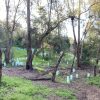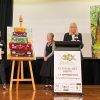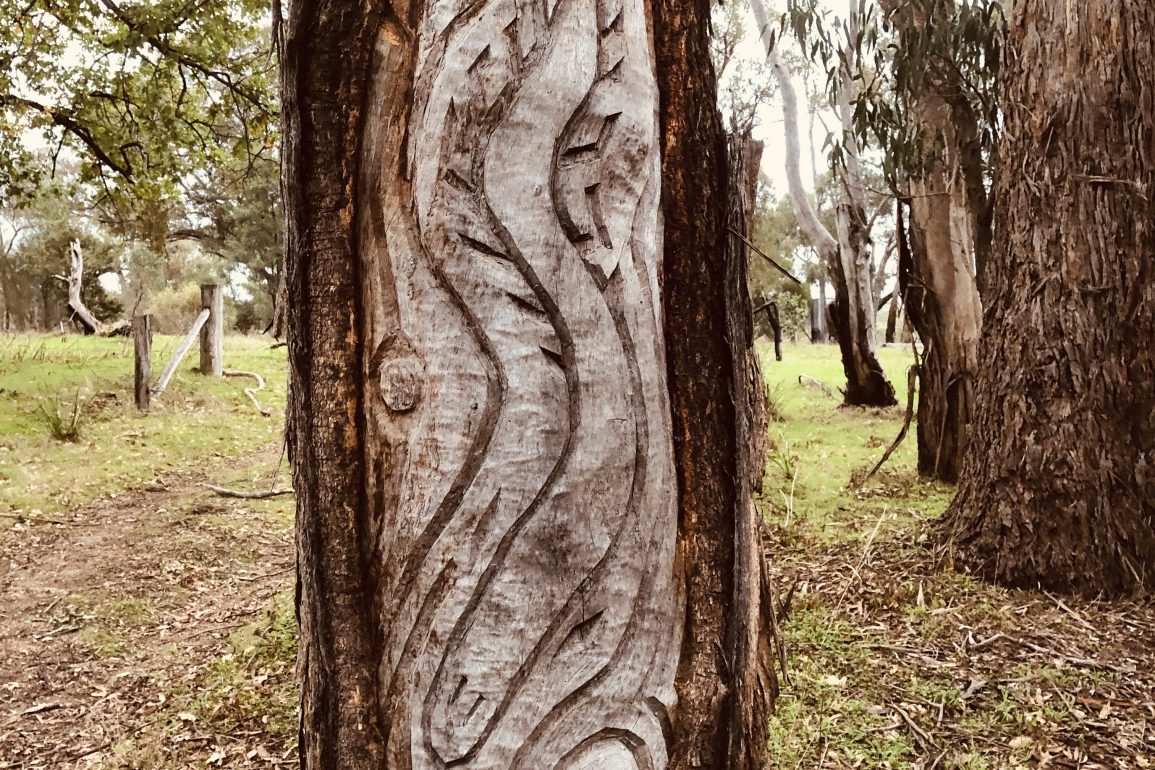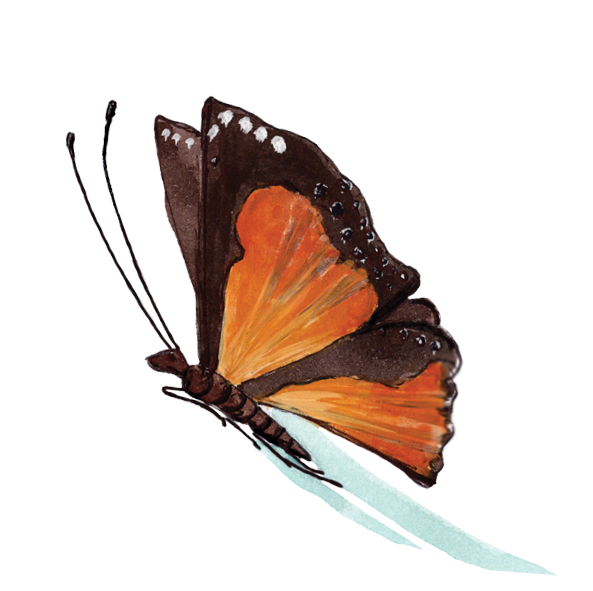The north bank of the Yarra River in Eltham is crown land managed by Parks Victoria as an undeveloped reserve known as “Laughing Waters” – about 500 hectares of recovering bushland that offers wonderful opportunities to explore and enjoy nature. There are numerous informal paths and kangaroo trails to walk and explore.
Manna Gums (Eucalyptus viminalis) dominates the riparian flat lands along the Yarra and is easily recognized by the strips of long bark hanging from the base of the tree’s trunk. Bracken Fern grows in thick patches in the understory ground along the Yarra River on the reserve’s southern border.
On the higher, well drained soils a mixture of four gum tree species grow – Long-leaf Box (E. goniocalyx ). Red Stringybark (E. macrorhyncha) , Yellow Box (E. melliodora) and Red Box (E. polyanthemos),
Eastern Gray Kangaroos (Macropus giganteus) are common in Laughing Waters, and at times mobs of 50 to 60 kangaroos can be seen grazing in the open grasslands.
The Yarra River is often in view as one walks many of the informal trails. There are many spots along the river to stop and enjoy tranquil scenes of the river. If lucky, a platypus may appear. Burrows tunneled into the banks are many and it is possible to see their excavators – wombats, once in a while. Ducks, cormorants and white-faced herons are typical sightings along the Yarra while sighting an Azure Kingfisher is a lucky find. Silver Wattles (Acacia dealbata) grow along the Yarra’s banks and during springtime display brilliant yellow flowers.

During an early evening walk one is treated to callings of kookaburras.
Winter rains awaken many ground plants from their dry-summertime slumber. Abundant winter rain this year has turned Laughing Waters brilliant green. Mosses have turned brilliant green, new grass blades blanket the ground. A wide variety of fungi, commonly known as mushrooms dot the “forest floor”. Lichens display a variety of colors.
September and October are exciting times to visit Laughing Waters and see a variety of new springtime flowers. Wattle trees display their yellow flowers, while many interesting ground plants sport yellow, red, purple and white flowers. Keen eyes will spot tiny orchids such as the Greenhood orchids in the genus Pterostylis. Red Postman flowers are easily spotted, while the delicate Spider Orchids are more difficult to spot as they blend into the mosaic of ground colors.
Parks Victoria has a number of enclosed areas within Laughing Waters where research is being conducted on several rare plant species. Fenced areas exclude kangaroo grazing so revegetation of trees and grasses can be monitored.
Laughing Waters is rich in human history. Killeavy – the country home built by William Irvine (1858-1943) who was Premier of Victoria, Federal Attorney General and finally Chief Justice. bought land in 1908 and built a weekend retreat. In 1923, Sir William Irving gave Killeavy to his daughter Beatrice as a wedding present. She and her husband James Morrison lived at Killeavy with their six children.
In 1910, the Killeavy garden was designed by William Guilfoyle who was the second director of the Royal Botanical Garden. A single Canary Island Oak (Quercus canariensis) was planted, and has grown to an outstanding massive tree that can be seen today. Unfortunately, the Killeavy house was destroyed in the 1939 bushfire. Beatrice Morrison continued living on the property where she studied native trees and plants until her death in 1989. Trees and some flowering plants from the Killeavy gardens can still be seen around the homestead site.
In 2015, a gathering of First Nation Wurundjeri members was held at the Killeavy-Morrison homestead site. At that gathering, “dendroglyphs” were carved into three trees, and can clearly be seen today.
From the 1950s to 1980s mud brick homes were promoted and built in Eltham by architect Alistair Knox and landscape designer Gordon Ford. “Boomerang” was one of the more well-known of these homes built by Gordon Ford. “Birrarung” has been used for artist retreats in the recent past.
Arm-chair readers can enjoy Laughing Waters by checking out Jane Woollard’s 2016 book, “Laughing Waters Road”, from the Eltham Library.
If you have never experienced Laughing Waters, now is the time to explore this enchanting bushland along the Yarra. Access is off Sweeneys Lane, Reynolds Road, and Glynns Road. Each season in the Laughing Waters offers different natural experiences and discoveries to be made.







